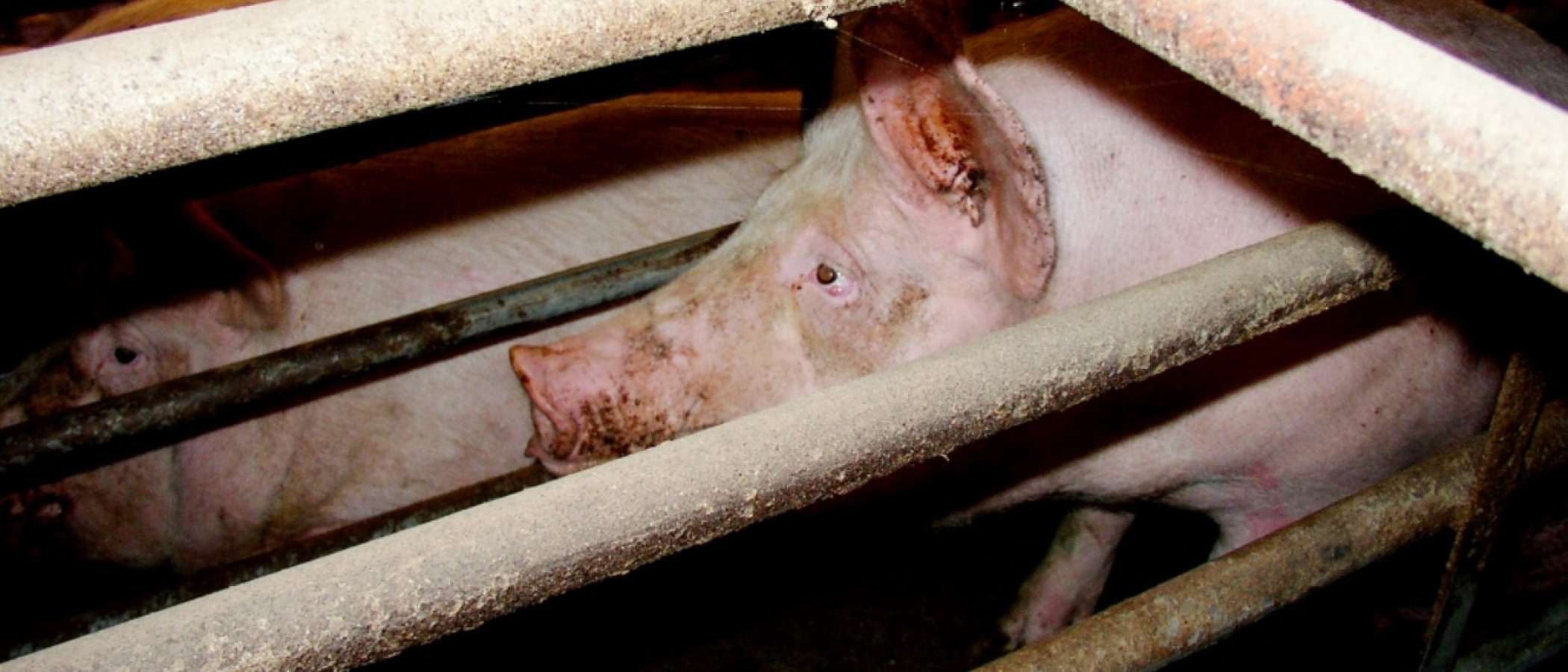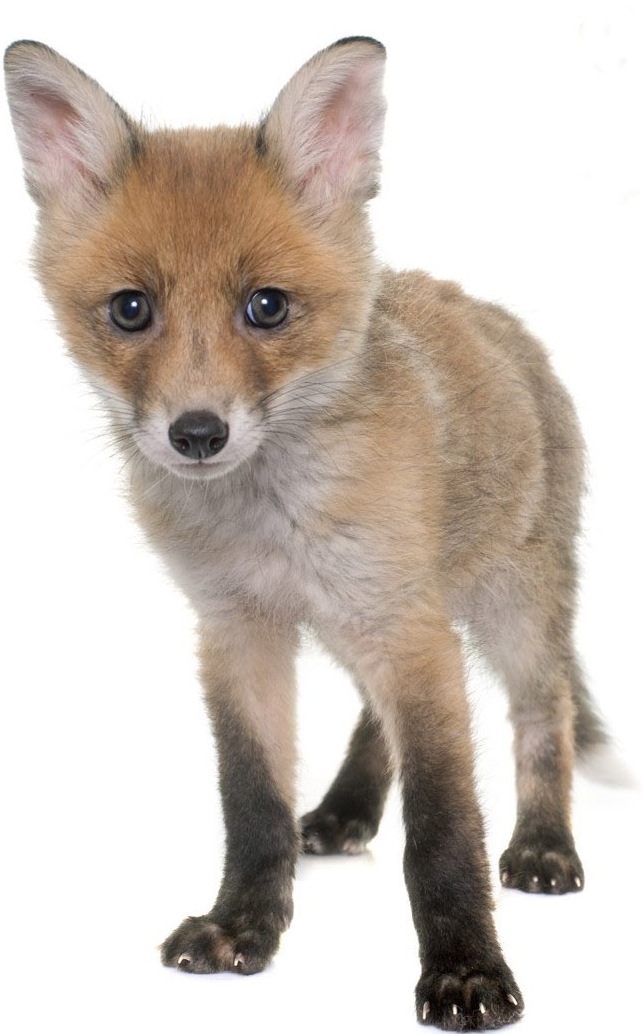We denounce
- Abandonment. Causes and Consequences
- Alternative methods to animal experiments
- Animals in circuses
- Breeding and hunting animals to show off their fur or skin
- Captivity shows and therapies
- Experimenting with animals
- Hunting, capturing and trafficking
- Intensive animal breeding
- Torture shows
- Transport over long distance or in bad conditions
- Zoos are like prisons
Intensive animal breeding

Intensive breeding systems have been designed to obtain the maximum return from the animals with the minimum space and economic cost.
LIVING CONDITIONS OF THE ANIMALS
Considered “producing machines” and fed with the object of obtaining the maximum profit from their bodies in the shape of meat, eggs or by-products, the animals are concentrated in industrial sheds where, in the case of certain species, they are born, grow and are sacrificed having lacked all their live, the minimum space necessary to be able to develop the most essential biological and behaviour standards. This industrial and machinist focus implies such harmful and negative practices for the animals such as: the absence of ventilation and natural light, freedom of movement and exercise, prevention of mating, motherhood and natural breeding. To this painful life can be added the additional suffering of being moved around. Long distance transport, in trailers and ships, in mass form and precarious conditions until they arrive at the abattoirs. Their slaughter can be even more cruel and painful, in the event that community law is not followed, which obliges that they be made insensitive beforehand.
CONSEQUENCES TO THE CONSUMER’S HEALTH
The consequences of industrial breeding are not restricted to the lack of the animals’ well being. The circumstances that surround industrial overcrowding have direct effects and consequences on consumers’ health as is becoming manifest. Genetic manipulation, overcrowding, awful living conditions together with artificial and devitalized food, have considerable affect on the animals’ health and immune system, to the point that they become very vulnerable to infection and illness. Medicines and antibiotics, hormone products, tranquillisers and toxic substances form part of the diet of compound and concentrated contaminants that they are given, with such different purposes like: fighting infections and epidemics, keeping them sedated to lessen their stress or accelerate fattening them up. The majority of these products remain deposited in the animal’s organism, and their toxic and harmful residues pass on, through meat, to the organism of those that consume it. In humans: allergies, resistance to antibiotics, medical diabetes, osteoporosis, congenital malformation and growth problems, are some of the consequences that can be derived from consuming, to a greater or lesser extent, contaminated meat.
ENVIRONMENTAL EFFECTS
Negative effects on the environment are other aspects of growing concern. The super production of animals concentrated in industrial developments is becoming more and more unsustainable from the environmental point of view, given the great amount of residue that these massive developments generate. Surplus purines from industrial farms damage and contaminate rivers, underground water, the sea, springs, vegetation and animal fauna. The emission of carbon dioxide, methane, ammonium nitrous oxide and sulphates has a negative influence, in different ways, on global warming, ozone loss, acid rain and contamination. Huge single crop areas, devoted to producing cereals for feeding livestock, is endangering the biodiversity balance. A quarter of the worlds’ cultivable land and three quarters of European land are used for fodder for animals that become food for humans.
FOIE GRAS: THE FUNNEL TORTURE
After the first few weeks of their life, during which geese live and feed in a relatively normal way, they are introduced into a reduced space: twelve geese can be put together in a space of between one and two metres. From that moment on the feeding torture is started. In olden times forced feeding was done by hand. Today, technology has become much more sophisticated, via a machine with a tube, while the goose’s neck is pulled out with a hook thus immobilising the animal. The tube that goes about 40 centimetres down its neck deposits the food compound in its oesophagus. This way, they are forced to feed two or three times a day and when they try to regurgitate the food, they are stopped by pressure being put on the neck.
The diet they are given, lacking in nutrients, causes the liver to store fats instead of eliminating them. A goose’s liver in normal conditions weighs around 120 grams and has a reddish aspect, but with this cruel and forced fattening system, the weight can reach two kilogrammes, becoming a shiny, greasy, yellowish colour. Autopsies carried out have revealed, heart disorders, broken membrane cells in the liver, cirrhosis, osteophagytis and injury to the gizzard and intestines. The equivalent in a person would be to force him to eat 12.5 kilogrammes of spaghettis a day.
WORLD TRADE ORGANIZATION, WTO: A THREAT TO ANIMAL DEFENSE
For years, regulations ruling trade by the WTO, have been blocking advances in animal well being, and unless they are brought under reform, they will continue to be a serious obstacle to all attempts at improvement. According to WTO rulings, no country or group can prohibit imports for ethical reasons, even when the laws of that country or group have been passed with the purpose of protecting the environment or animals.
DEVELOPING COUNTRIES
Intensive stockbreeding harms doing away with poverty and threatens the living economy of millions of small farmers. When huge industrial sheds are set-up in rural areas, small farmers that use extensive and traditional systems cannot compete with intensive systems, thus harming animals and rural economy and living standards. This is one of the many campaigns where ADDA, as a member of the European Coalition for Farm Animals ECFA, actively collaborates, by denouncing and petitioning for the WTO’s regulations to be modified. It seems absurd that governments agree on free trade without taking into account, protection of the environment, animal defence and other considerations of a social nature.
INFORMING, INCREASING AWARENESS AND DENOUNCING.
A number of activities are being carried out by ADDA, in and outside our country, in relation to animals bred for human consumption, to increase awareness and to achieve the implementation of new Directives, that would significantly reduce suffering that animals are subject to.
ALTERNATIVES TO BENEFIT ANIMALS, THEIR HEALTH AND THE ENVIRONMENT.
- REDUCE EATING MEAT OR ELIMINATE MEAT FROM ONE’S DIET.
- IF ONE CONSUMES MEAT, EGGS OR BY-PRODUCTS, CHOOSE THOSE THAT COME FROM EXTENSIVE OR BIOLOGICAL BREEDING AS THEY ARE MORE HUMANITARIAN SYSTEMS IN ANIMAL TREATMENT.
- INFORM FRIENDS AND FAMILY.
-
COLLABORATE IN CAMPAIGNS IN THEIR FAVOUR.
For more information, see the section on Reports and Publications dealing with the subject.




